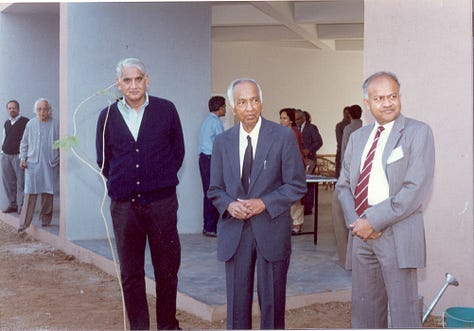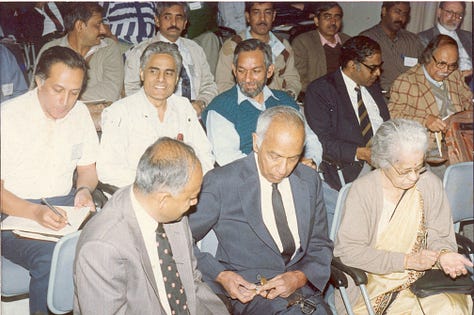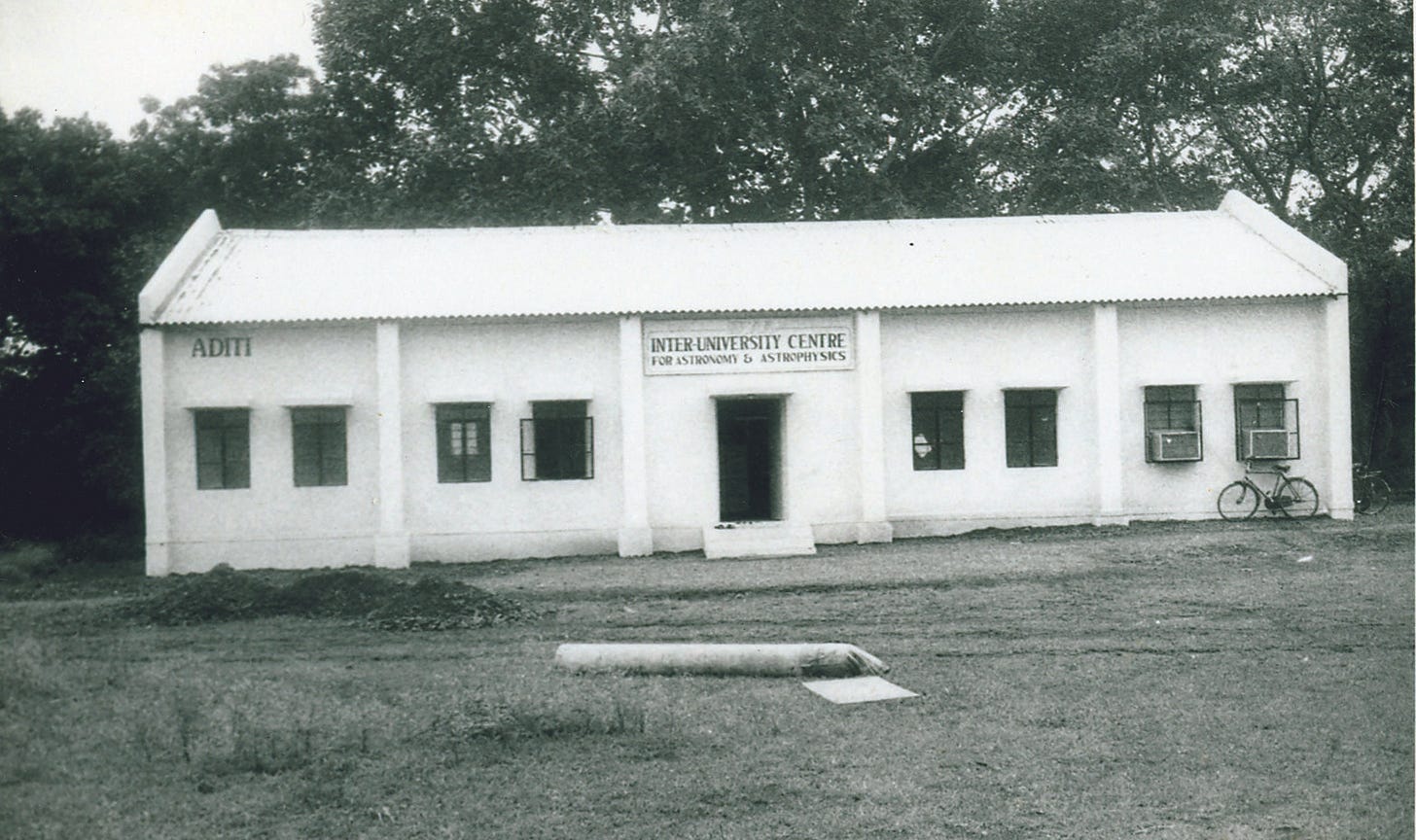The IUCAA Story, Part 7: Get me to the church on time
Navigating delays, riots, and strikes to celebrate a landmark
As I looked back at the year 1988, I realized how incredibly fast project IUCAA had advanced. The Centre was approved by the GOI, it acquired land from the Government of Maharashtra in July, it was registered under the Societies Act on December 29, it had its Foundation Day, it had an eminent architect to create an elegant campus–and now we were looking forward to its dedication to the Nation. Having discussed this with Yash, I fixed the dedication date to December 28, 1992.
In deciding on this date, I took into consideration the inputs provided by the architect and the construction managers. Allowing margins for delays, they felt that they could get the work completed by early December 1992. We wanted the Nobel Laureate Prof. Subrahmanyan Chandrasekhar to give the Dedication Lecture. After some correspondence, he agreed, and the date of 28 December 1992 was confirmed for the ceremony. Again, I felt incredibly lucky that the whole project had moved so fast.
Perhaps I should mention that before we had any space of our own, we had use of one room in the Golay Bunglow, the house where the Pune University Registrar used to stay. All our administrative and academic activities were confined to the 100-odd square feet of that room with overflow on the steps outside. However, within six months, we built a temporary ‘cottage’ that we named ADITI (mother of the Hindu gods). Now we had the luxury of 2000 square feet. But my colleagues and I were anxious to work on a full-fledged campus.
How did we fare with its construction? Before coming to this question, I wish to make a comment. A typical government-supported institution requires funds for its various academic activities as well as for the housing of its staff. Of these, the former is given priority. When the academic needs are met, the funding agency runs out of cash, and the stock response is: ‘We will build staff housing when GOI makes funds available.’ In the case of TIFR, the institute started receiving funds by the mid-1940s, but staff housing had to wait until the mid-1960s.
To avoid getting IUCAA in that situation, I adopted a different policy. I had housing built first and academic activities next. My request to UGC for modest funds to initiate staff housing was accepted, and the so-called phase I was completed in about 20 months. The Director’s residence, ten Type-V and ten Type-IV houses (quarters) were built. At that stage, there was hardly any staff, and I was asked: building staff quarters when there was no staff–was it not a waste of money? My reply was that the empty quarters were to be temporarily used for academic activities. Thus, one quarter was used for the IUCAA library, one for housing IUCAA’s first computer, one for instrumentation, etc. Some quarters were used for housing students and associates–so there was no empty quarter.
Thus, the building programme proceeded as planned. Charles was expecting to complete Phase II by early December. There had been minor hiccoughs but they were sorted out without any difficulty.
But the “unexpected” lurked around the corner. On December 6 came the news that the Babri Mosque was demolished. This event soon led to nationwide disturbances. In Mumbai, they were particularly severe. Even after they subsided, some areas were considered “dangerous” for movement. It so happened that some Muslim artisans, who were needed to put finishing touches on the IUCAA main building, dared not stir out of their residence. Charles and I sent messages to them guaranteeing safety. Finally, they agreed to come–but by then, the calendar had moved to December 26. Having taken stock of the work needed from them, they promised to complete it, even if they had no sleep.
Nor had Charles any sleep on the night of December 27. He wanted to ensure that the decorative stone plating at the entrance was completed to his satisfaction. On my last inspection tour of the campus, I saw him standing at the entrance, checking the work being done.
While we were breathing a sigh of relief, we were in for another possible problem. Two VIPs of our function, Professor Chandrasekhar and Professor Ram Reddy (who had succeeded Yash Pal as Chairman of the UGC), were to travel by air. A lightning strike of pilots of Indian Airlines put a question mark on their participation. However, the resourcefulness shown by IUCAA’s budding travel section made the impossible possible. They arranged for our guests to arrive on an alternate, still-functioning route.



The dedication ceremony went off smoothly, and all of us felt immensely relieved. There were other important events like the annual Foundation Day Lecture, a meeting of the SAC-IUCAA, the establishment of the IUCAA Library, the Computer Centre and the Instrumentation Centre. All concerned staff members were working at a 200% level. I thanked them all and felt confident that the same ‘frontier level’ spirit would drive them to future achievements.



Hi Sir, I met you in 2001 in Chandigarh as a young reporter working for The Tribune. I was lucky enough to have got an exclusive interview with you. It was a delight to talk to you, even though I did not know much about astrophysics. You patiently replied to my silly questions about time travel, black holes and the scientific basis of astrology.
Now, 25 years later, I'm a wise, battle hardened journalist, covering Punjab government for ThePrint.
How does one send you that interview. Reading it after so many years, brought a smile on my face and it will cheer you up too!!!
Chitleen K Sethi
chitleenksethi@gmail.com
all the series of events are really thrilling ! I can imagine your crossing the fingers till the dedication ceeremony was over .